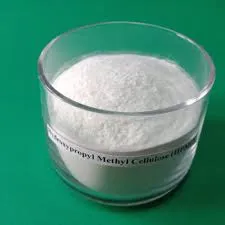
Jul . 26, 2024 16:24 Back to list
Exploring the Solubility Characteristics of Hydroxypropyl Methyl Cellulose in Various Aqueous Solutions
Understanding the Solubility of Hydroxypropyl Methyl Cellulose
Hydroxypropyl Methyl Cellulose (HPMC) is a cellulose ether derived from natural cellulose. It is widely used in various industries, primarily due to its unique properties such as solubility, film-forming abilities, and thickening capabilities. This article delves into the solubility of HPMC, discussing its significance, influencing factors, and applications.
The Importance of Solubility
The solubility of HPMC is a critical parameter that affects its functionality across different applications. Solubility refers to the ability of a substance to dissolve in a solvent, forming a homogeneous solution. For HPMC, its solubility in water makes it an exceptional option in industries such as pharmaceuticals, food production, cosmetics, and construction materials. In the pharmaceutical industry, for instance, HPMC is used as a binder in tablets, as it forms a gel-like matrix that ensures controlled drug release.
Factors Influencing Solubility
Several factors impact the solubility of HPMC in water
1. Molecular Weight HPMC comes in various grades, characterized by different molecular weights. Generally, lower molecular weight HPMC grades exhibit higher solubility due to their smaller size, allowing for easier interaction with water molecules. Conversely, higher molecular weight grades can form viscous solutions, which may reduce solubility.
2. Substituent Groups The degree of hydroxypropyl and methyl substitution affects solubility. Higher levels of substitution enhance the hydrophilicity of HPMC, promoting greater solubility in cold water. The balance of the substitution groups can tailor the solubility properties of HPMC for specific applications.
3. Temperature Temperature plays a pivotal role in solubility. HPMC shows increased solubility with rising temperatures, making it easier to dissolve in hot water. This property is harnessed in various formulations where temperature management is practical.
4. pH Levels The solubility of HPMC can also be influenced by the pH of the solvent. In some cases, acidic or alkaline conditions can alter the ionization of hydroxyl groups, thereby impacting solubility. It is essential to consider the pH of the solution when formulating with HPMC to ensure optimal performance.
hydroxypropyl methyl cellulose solubility

5. Presence of Other Ingredients In formulations that consist of multiple components, the presence of salts, sugars, or other polymers can affect the solubility of HPMC. These additives can either improve or hinder solubility depending on their nature and concentration.
Applications of HPMC
The solubility characteristics of HPMC make it suitable for a variety of applications
- Pharmaceuticals As mentioned earlier, HPMC is a popular excipient in the pharmaceutical industry. Its ability to form gels enhances the bioavailability of drugs and ensures controlled release.
- Food Industry In food production, HPMC is employed as a thickening agent, stabilizer, and emulsifier. Its solubility characteristics allow it to improve the texture and mouthfeel of various food products.
- Cosmetics and Personal Care The cosmetic industry utilizes HPMC as a thickener in creams and lotions. The ability to form clear and stable gels makes it an ideal ingredient for cosmetic formulations.
- Construction In the construction sector, HPMC is used in mortar and plaster formulations. Its water-retention properties promote workability and adhesion, ensuring the longevity and strength of construction materials.
Conclusion
The solubility of Hydroxypropyl Methyl Cellulose is a fundamental aspect that dictates its utility across different fields. Understanding the factors influencing solubility, such as molecular weight, substituent groups, temperature, pH levels, and other ingredients, is essential for optimizing its use in various formulations. As industries continue to innovate and develop new products, HPMC will remain a versatile and valuable component in many applications.
-
Versatile Hpmc Uses in Different Industries
NewsJun.19,2025
-
Redispersible Powder's Role in Enhancing Durability of Construction Products
NewsJun.19,2025
-
Hydroxyethyl Cellulose Applications Driving Green Industrial Processes
NewsJun.19,2025
-
Exploring Different Redispersible Polymer Powder
NewsJun.19,2025
-
Choosing the Right Mortar Bonding Agent
NewsJun.19,2025
-
Applications and Significance of China Hpmc in Modern Industries
NewsJun.19,2025







